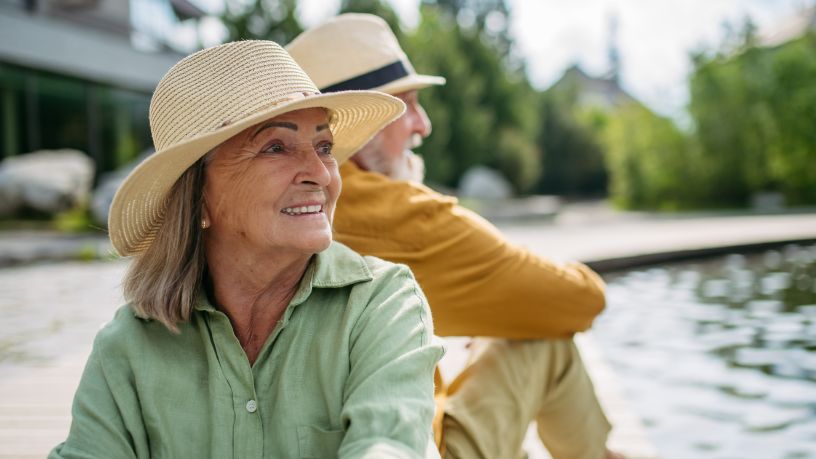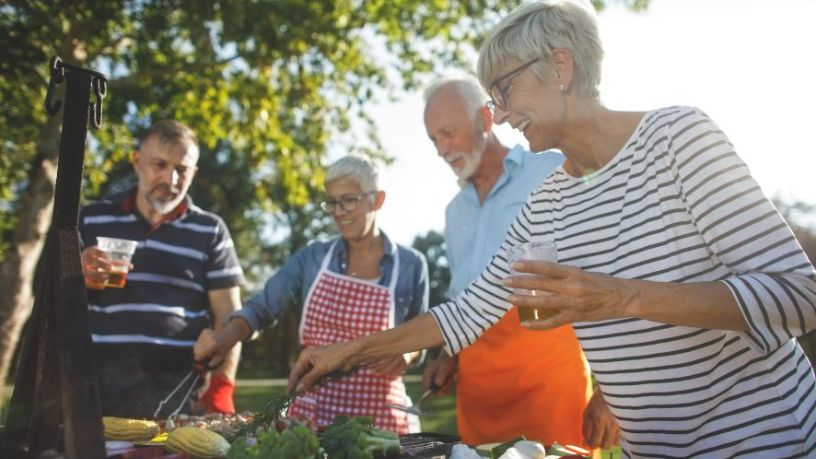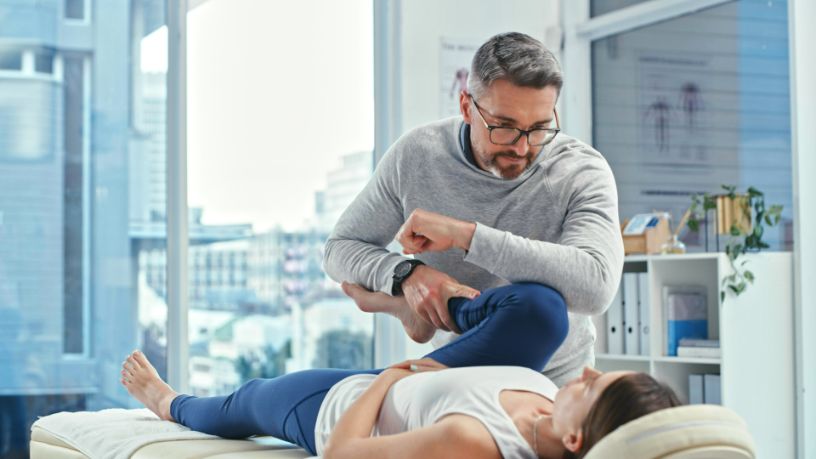Osteoarthritis is often called a ‘wear-and-tear’ disease because it’s the result of cartilage wearing away over time.
On this page
Key takeaways
Stiffness, reduced mobility and unstable joints are all symptoms of osteoarthritis.
While there is no cure for osteoarthritis, symptoms can be treated with exercise, lifestyle changes, physical therapy, medication and even surgery.
Osteoarthritis (OA) is the most common type of arthritis in Australia, affecting around 2.2 million people.1
Developing gradually over time, OA can significantly affect your quality of life. Here, we explore the symptoms, causes and treatment options of OA.
What is osteoarthritis?
Often thought of as a 'wear-and-tear' disease, osteoarthritis (OA) is the result of cartilage in your body becoming rougher and thinner over time.
The bone underneath makes up for this by thickening and growing outwards, creating outgrowths. This can make your joint appear knobbly and become inflamed.
Although there is no cure for OA, there are several treatments and self-help therapies that can ease your symptoms and increase your mobility and quality of life.
Symptoms and areas of OA
Some of the signs and symptoms of OA may include:
- stiffness
- reduced movement
- pain when you move
- swollen and unstable joints
- weakened muscles
- joints making sounds.2
OA affects different joints in your body. These commonly include your:
- hands, fingers and wrists. This can affect the base of your thumbs and the joints at the end of your fingers. Some joint pain and swelling may also occur in your wrists
- neck and back. This can occur anywhere along the bones in your spine, causing pain and numbness anywhere in the top, middle or lower parts of your back and even your legs
- feet. OA commonly affects the joint at the base of the big toe. You may also develop some pain in your ankle if you have had a past injury near the joint
- knee. This can be especially painful at the front and sides of the knee joint. If your OA is severe, your knees may become bent and bowed. Sometimes your knee joint may lock, making it hard to bend
- hip. Pain may occur in the front of your groin. OA can also affect the side and front of your thigh or around to the outside of your buttocks. Stiff joints may make it difficult to turn your hip when walking or exercising.
What causes OA?
The exact causes of OA aren’t fully understood. However, certain things may increase your risk. These include:
- increasing age
- being female
- being overweight or obese
- having a family history of OA
- having a profession where you overuse your joints
- having a previous joint injury.2
How is OA diagnosed?
After examining your symptoms and risk factors, your doctor may check any affected joints and look for bony outgrowths, swelling, creaking, instability and reduced joint movement.
Your doctor may then order tests to determine the type of arthritis you possibly have.
How is OA treated?
Depending on your symptoms and level of pain, a mix of lifestyle and self-care changes usually provides the best results for treating OA. However, medication may be required.
Common OA treatments include:
Exercise and weight management
Regular physical activity can strengthen the muscles around your affected joint. Activities might include walking, swimming, strength-based exercises or stretching. However, it may be important to stop physical activities that damage the joint.
If you’re overweight or obese, managing and maintaining your weight can reduce the strain on your knees.
If you have OA, it’s important to discuss the exercise and weight management options that are right for you with your doctor, physiotherapist, occupational therapist and/or exercise physiologist.
Physical therapy
Specialised techniques can help strengthen the muscles around your joints, increase flexibility and reduce pain. Some common physical therapy treatments include:
- heat therapy
- hydrotherapy (also known as ‘aquatic therapy’)
- acupuncture
- tai chi.
Physical therapy
Specialised techniques can help strengthen the muscles around your joints, increase flexibility and reduce pain. Some common physical therapy treatments include:
- heat therapy
- hydrotherapy (also known as ‘aquatic therapy’)
- acupuncture
- tai chi.
Support aids
If you’re living with OA, certain mobility aids can help you reduce and manage your symptoms. These include walking sticks, knee braces and foot insoles.
If OA is interfering with everyday activities like turning on taps or preparing food, your doctor may refer you to an occupational therapist. They may recommend tools like ergonomic utensils or reaching aids.
Medication
Although medication can't cure OA, it may help relieve symptoms. Common medicines include:
- paracetamol
- non-steroidal anti-inflammatory drugs (NSAIDs)
- corticosteroid injections
- duloxetine
- opioids (for severe pain).
Before taking any medication, it’s important to talk to your doctor about which option might be right for you.
Bupa Health Programs
Discover our programs designed to help you recover and stay out of hospital where you can.
Surgery
If you have severe OA that can’t be effectively treated with other therapies, your doctor may recommend a surgical procedure, such as a hip replacement or knee replacement.
Surgery usually carries risks and may not be suitable for everyone. Talk to your doctor about the potential risks and benefits.
Resources
Arthritis Australia offers support and advice for living with arthritis. Visit their website or call them on 1800 011 041.
Pain Australia works towards improving the quality of life for those living with pain. Visit their website for resources and support, including their National Pain Services Directory.

At Bupa, trust is everything
Our health and wellbeing information is regularly reviewed and maintained by a team of healthcare experts, to ensure its relevancy and accuracy. Everyone's health journey is unique and health outcomes vary from person to person.
This content is not a replacement for personalised and specific medical, healthcare, or other professional advice. If you have concerns about your health, see your doctor or other health professional.
1Australian Government, Australian Institute of Health and Welfare. (2023). Osteoarthritis. Australian Government, Australian Institute of Health and Welfare.
2Better Health Channel. (2019). Osteoarthritis. Victoria State Government, Department of Health.
You might also like...
Rheumatoid arthritis: An overview
Rheumatoid arthritis is a chronic autoimmune condition that can lead to stiff, swollen and inflamed joints. Learn about the symptoms, causes and treatments.
Top anti-inflammatory foods to help reduce joint pain
Discover some of the best anti-inflammatory foods to relieve joint pain and arthritis. Learn what to eat to support healthier joints and reduce inflammation.
Knee osteoarthritis: The basics
Osteoarthritis is a joint disease that commonly affects the knee, so make sure you know the symptoms, causes and treatments that are available.
What you need to know about knee replacement surgery
A knee replacement or revision can improve your mobility and quality of life, but it’s still a major surgery. So, what do you need to know about your knees?





